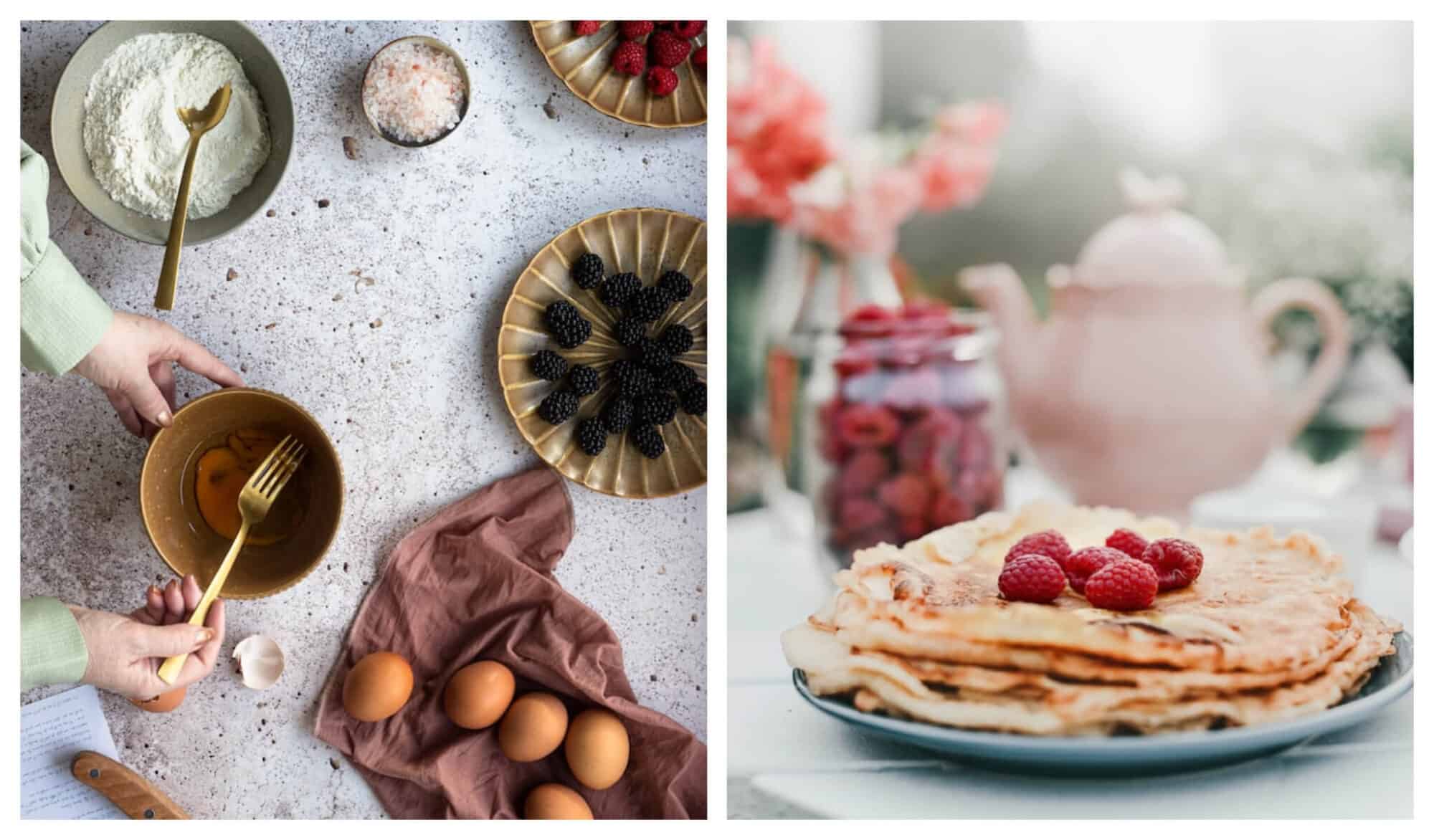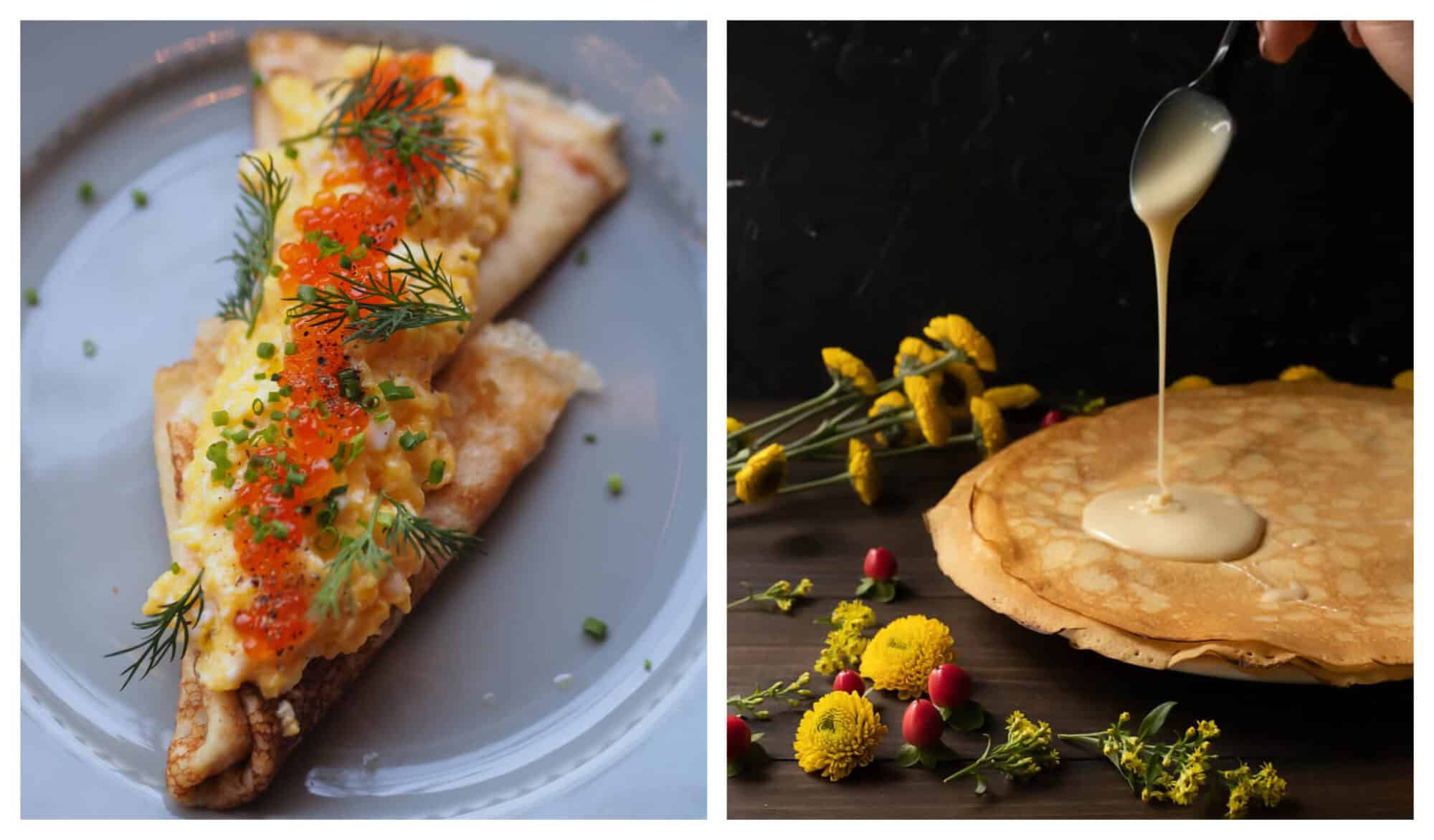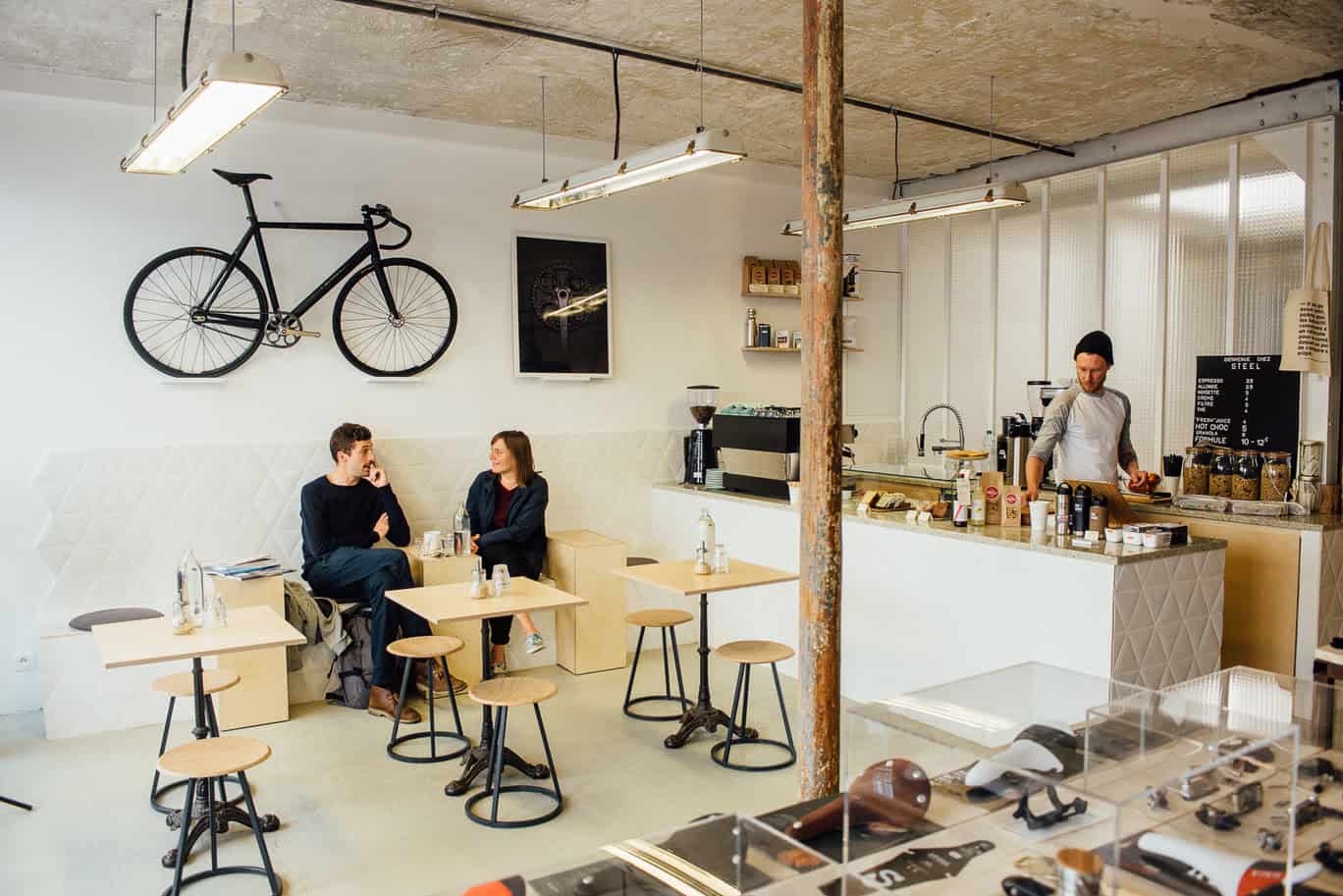7 years ago in my Brooklyn apartment, I found my French husband (then-boyfriend), rummaging through my kitchen for ingredients and cooking utensils. “I have to make crêpes,” he said. “Well, we can just order,” was the naïve, automatic response from this New Yorker. To which he said “Non mais chérie, c’est la Chandeleur!” “Chandel… Chandler Bing, what?!!” I replied.
What is la Chandeleur?
La Chandeleur, February 2, is the end of the Christmas period, celebrated 40 days after Christmas Eve. The word Chandeleur evokes the French word for candles (chandelles) which were lit in Jesus’s honor as the “light of the world”. For those who are not religious, it is known just as crêpe day.
You can find many classic French crêpe recipes on the internet. But if you want to take them up a notch, I’m delighted to share my French husband’s 6 secrets for how to make great crêpes. These small details are guaranteed to make a big difference.
And like all things food related, the French take crêpe making very seriously. Through the years, I’ve seen my husband throw out perfectly delicious crêpes just because they were not like his grandma’s. In an effort to create his madeleine de Proust (something that triggers a reminiscence), my husband searched far and wide to collect tips on how to make the perfect crêpes (or truthfully, he called his mother several times).

How to make great crêpes: 6 tips
1. Dark rum
This is perhaps not a secret at all to those from Normandie or Bretagne. It’s the small amount of dark rum that gives a crêpe batter the x-factor. Without it, that je ne sais quoi won’t be there at all. The only way to justify this is to taste one crêpe with rum and another one without. If you’re worried about the ethanol, the heat will cook it off and make it alcohol-free.
2. Vanilla sugar
Some will find the idea of making crêpes intimidating simply because they’re French. They are actually not as complicated as you think. Using vanilla sugar instead of sugar and vanilla separately is a little trick that goes a long way towards simplifying things. With vanilla sugar, you get the exact flavor you need without either vanilla or sugar overpowering the other ingredients.
3. First add eggs, then milk, then gradually add flour
Some recipes will specify to add flour first, then eggs and milk to the mix. Or the recipe might mention adding the 3 ingredients together without any further details. The batter should have a fluid consistency. To achieve this, the order in which you mix the ingredients is key. Mix the eggs and milk together first. Then slowly and gently add the flour while you whisk. Adding too much flour all at once will make your batter too thick. You also won’t be needing an electric whisk if you follow this sequence.

4. Let the batter rest before cooking
Good things take time. One of the secrets to making great crêpes is letting the batter sit in the fridge for 12 hours or overnight. This gives time for the flavors to merge. Don’t forget to mix it well again before cooking though!
5. Oil the pan with half a potato dipped in oil
It’s not essential to have a crêpe griddle or pan, when you can actually use any flat pan you already have and still make perfect crêpes. In order to have a perfectly greased pan use a potato dipped in oil. Slice a small potato in half and, using only one half, stick a fork onto its end and dip the flat end in a bowl with a shallow amount of vegetable oil. Use this potato to grease your hot pan before before pouring in the crêpe batter. Ideally you want to coat the pan with ample oil to make flipping easier, to achieve a fine crêpe texture, and to have those crunchy edges.
6. Flipping it
A batter spreader is not always necessary. With your pan’s handle, you can maneuver your pan while you pour batter to spread it out. Remember not to pour too much batter or your crêpes will be too thick. Your pan needs to be very hot too. Little holes in your crêpe are signs that you’re on the right track and the crêpe is nearly ready to be flipped. To flip it, you don’t always have to toss it in the air— rather, you can use any flat spatula to gently go under the crêpe and turn it over.
As with everything, practice makes perfect. You might not get a perfect crêpe on your first try, but you may on your second. Enjoy your crêpe, salée or sucrée, on its own or with toppings. Serve with a cold bowl of cider (as they do in Bretagne) or with a hot cup of tea. Bon appétit!

Related Links
- Wondering what to do in Paris in February? Find out our top picks!
- Here are our picks for where to go for the best crêpes in Paris.
- For a plethora of recipes (sweet, savory, buckwheat, and everything in between) check out Marmiton’s special feature devoted only to the delights of all things crêpes.
Written by Maikka Piquemal for HIP Paris. Looking to travel? Check out Plum Guide and our Marketplace for fabulous vacation rentals in Paris, France or Italy. Looking to rent long or short term, or buy in France? Ask us! We can connect you to our trusted providers for amazing service and rates or click here. Looking to bring France home to you or to learn online or in person? Check out our marketplace shop and experiences.



RELATED ARTICLES
How to Order Coffee in French
by
Alessia Armenise
7 Restaurants to Try on Your Next Paris Trip
by
Lily Heise
Best Restaurants in Paris Around Notre Dame Cathedral
by
Lily Heise
The 24 Best Paris Terraces For Lingering Outdoors
by
Lily Heise
Best Marais Restaurants: Where to Eat in Paris
by
Lily Heise
Marjorie Taylor’s Asparagus Risotto and Market Day in Beaune
by
Marjorie Taylor
The Best Croissants in Paris 2024
by
Alessia Armenise
All About the Baguette: The Ten Best in Paris
by
HiP Paris
Restaurants Near the Louvre
by
Lily Heise
Where to Eat Near the Eiffel Tower
by
Lily Heise
French Dining Etiquette: Restaurant Dining Like a Local
by
Tory Hoen
La Chandeleur: The Best Crêpes in Paris
by
Ali Postma
Galeries Lafayette Gourmet: 7 Casual Restaurants from Celebrated Chefs in Paris
by
Pronoti Baglary
French Cooking Academy Cookbook: The Art of French Cuisine for Home Cooks
by
HiP Paris
Ferrandi Paris Cooking Class: Learning How to Make a Tarte Tatin + a Recipe
by
Joanna Todorova
Thanksgiving in Paris: Shop Like a Chef
by
Lise Kvan
Bouillon Chartier, Paris Gare de l’Est
by
HiP Paris
The Best Hidden Italian Dining Spots in Paris
by
Rachel Naismith
Cult of Quality: Meeting the French Standard
by
Tory Hoen
Where to Eat in Paris on a Budget: Our Top 40 Spots
by
Rachel Naismith